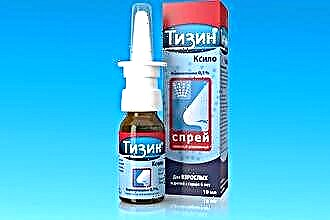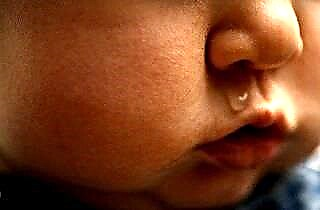The study of the problem of clinical manifestations and therapy of otitis media remains relevant for many decades. Sometimes you can hear the opinion that otitis media is a "childhood" pathology and adult patients cannot get it. Although it cannot be denied that there is a high incidence of otitis media among children compared to the adult population, inflammation of the ear structures can occur in patients of any age group. In addition, the "child" form is considered an extremely acute purulent otitis media. As for otitis externa, they are much more often detected in adults. What characterizes ear otitis media, symptoms and treatment of the disease are questions that do not cease to interest both patients and specialists in the field of otolaryngology.
Pain

Otitis media, the symptoms and treatment of which are determined by the variant of inflammatory changes, manifests itself in different painful sensations. Pain is a persistent symptom of an acute form of the disease. Pain should be considered with the main types of otitis media:
- outdoor limited;
- external diffuse;
- medium catarrhal;
- medium purulent.
With otitis externa with a localized area of pathological changes in the ear canal, an infiltrate is formed with a purulent rod at the apex - a furuncle. Symptoms and treatment of otitis externa in adults are explained by the type of inflammation - damage to the hair follicle and the surrounding subcutaneous tissue. The pain in the ear is intense, one-sided, may be accompanied by a headache, increases with opening the mouth, chewing and talking. It often becomes stronger in the evening and at night, and can spread over the entire half of the head on the affected side.
Pain syndrome with a diffuse form of external ear inflammation is not present in all cases.
However, sometimes pharmacological agents can be used to relieve pain (for example, non-steroidal anti-inflammatory drugs, or NSAIDs in tablet and injectable form), which indicates the possibility of vivid pain sensations. The pain is constant, persistent.
Catarrhal otitis media occurs most often against the background of an acute respiratory infection. Patients are worried about severe pain in the ear, which is permanent.
Pain with a purulent form is one of the most significant symptoms. It is described as ever increasing, increasing. She may be:
- stabbing;
- pulsating;
- shooting, etc.
Pain with purulent otitis media is characterized by irradiation to the teeth, temple, nape, intensification at night.
And with a limited form of external inflammation, and with a purulent form of otitis media, pain subsiding is observed when the purulent focus is opened.
Hearing impairment
A change in hearing acuity is an important symptom that makes it possible to judge the form of otitis media and the nature of the inflammation. A description of the signs of hearing impairment inherent in each form of the disease can be presented in the table:
| Outdoor limited | In a typical course, hearing remains unchanged. But if the boil is large, it blocks the external auditory canal, provoking a picture of conductive hearing loss on the affected side. |
| Outdoor diffuse | Hearing is usually not impaired. The exception is situations when there are a lot of purulent masses or fungal plaque, and they completely fill the ear canal, becoming a kind of "plug". |
| Acute catarrhal | Hearing decreases, ear "overflow", noise in the ear is felt. The perception of sounds is impaired, the patient can hardly hear whispering speech. |
| Acute purulent | Hearing acuity is reduced, the ear is blocked. Hearing function is fully restored only during the healing of the perforation of the tympanic membrane. |
Slowly increasing hearing impairment is a typical symptom of adhesive otitis media and progressive labyrinthitis.
The predominant number of variants of the disease is characterized by impaired auditory function, therefore, to determine an accurate diagnosis, it is necessary to consult an otolaryngologist. The timing of the examination and initiation of therapy is important because ear inflammation, for which symptoms and treatment must be confirmed by a doctor, can lead to permanent hearing loss.
Otorea
 Otorrhea is understood as the presence of the ear canal separated from the cavity. Its consistency and odor suggest what type of ear disease the patient is experiencing. The color of the discharge, the location in the lumen of the ear canal is also important - a plaque or loose cheesy masses is characteristic of a fungal infection.
Otorrhea is understood as the presence of the ear canal separated from the cavity. Its consistency and odor suggest what type of ear disease the patient is experiencing. The color of the discharge, the location in the lumen of the ear canal is also important - a plaque or loose cheesy masses is characteristic of a fungal infection.
Otorrhea is not always present - for example, there is no discharge in the catarrhal form of otitis media.
With purulent otitis media, otorrhea begins after perforation of the membrane, accompanied by a weakening of pain in the ear, relief of the patient's general condition (body temperature decreases, headache disappears). In this case, the discharge is purulent, but does not have a putrid odor. In the first hours and / or days, abundant, after which the volume of the discharge gradually decreases.
Limited otitis externa is not accompanied by significant suppuration, however, during the opening of the boil, when examining the external auditory canal, you can see a depression at the top of a purulent formation, from which pus is released. The diffuse outer form is characterized by the presence of white flakes, scales or pus mixed with the epithelium, which has an unpleasant odor.
Other symptoms
With inflammatory lesions of the ear, the following may be present:
- weakness;
- headache;
- fever;
- nausea;
- vomit;
- upset stool.
The last three symptoms from the list are inherent, as a rule, in a severe purulent form. They cannot be called classic, they only reflect the severity of the intoxication syndrome. Fever with purulent otitis media is febrile, subfebrile can be with diffuse external and limited form. There are also variants of the disease without an increase in body temperature values.
Treatment
Otitis media, symptoms in adults in which treatment is necessary, cannot be stopped on its own, without any therapy. Lack of medical care leads to the formation of complications, the transition to the chronic stage.
In the case of limited otitis externa, ointments to soften the skin or antiseptics are indicated. For external treatment of the skin of the ear canal, boric alcohol, brilliant green solution is used. Antibiotics (Amoxicillin), antipyretics (Paracetamol) are prescribed. If necessary, the boil is opened surgically.
For diffuse inflammation of the outer ear, apply:
- Diet (prohibition of spicy foods, spices, alcohol).
- Hyposensitization (Tavegil, calcium preparations).
- Toilet of the ear (rinsing with antiseptic solutions).
- Topical antibacterial agents (Polydex, Anauran).
- Ointments with antibacterial, antifungal and anti-inflammatory components (Triderm).
With catarrhal otitis media, appoint:
- decongestants (Xylometazoline, Oxymetazoline);
- antihistamines (Cetrin, Claritin);
- ear drops (Otinum, Otipax).
In the treatment of purulent otitis media, systemic forms of antibacterial drugs should be used.
The treatment regimen for purulent inflammation of the middle ear is based on drugs such as:
- antiseptics (hydrogen peroxide);
- NSAIDs (Paracetamol, Ibuprofen);
- antibiotics for systemic and local use (Amoxicillin, Augmentin, Tsipromed).
If the pus is viscous and poorly removed, it is advisable to use mucolytics (for example, Acetylcysteine).Fenspirid (Erespal) is prescribed as an anti-inflammatory agent. Any medicine can be injected into the ear only warm (about 37 ° C) after a thorough toilet of the external auditory canal.
Purulent otitis media is treated not only by conservative methods. If indicated, a surgical opening of the tympanic membrane is performed to ensure a free outflow of pus accumulated in the ear cavity.
Precautions for a purulent form of the disease are the rejection of active ear warming, the introduction of any solutions and drops only as directed by a doctor (especially after the onset of suppuration). Treatment of the symptoms of otitis media (a sharp rise in temperature, sudden severe dizziness, vomiting, unbearable headache, photophobia) should be started immediately after examining the patient.



